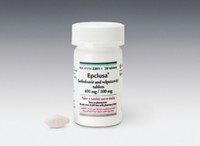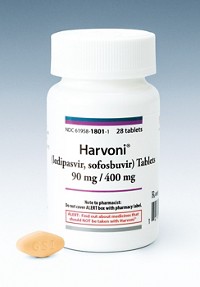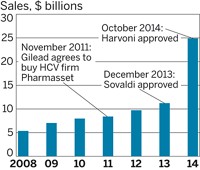Advertisement
Grab your lab coat. Let's get started
Welcome!
Welcome!
Create an account below to get 6 C&EN articles per month, receive newsletters and more - all free.
It seems this is your first time logging in online. Please enter the following information to continue.
As an ACS member you automatically get access to this site. All we need is few more details to create your reading experience.
Not you? Sign in with a different account.
Not you? Sign in with a different account.
ERROR 1
ERROR 1
ERROR 2
ERROR 2
ERROR 2
ERROR 2
ERROR 2
Password and Confirm password must match.
If you have an ACS member number, please enter it here so we can link this account to your membership. (optional)
ERROR 2
ACS values your privacy. By submitting your information, you are gaining access to C&EN and subscribing to our weekly newsletter. We use the information you provide to make your reading experience better, and we will never sell your data to third party members.
Business
Life After Zocor
U.S. drug majors offered steady second-quarter results, despite shake-up in cholesterol market
by Lisa M. Jarvis
August 24, 2006
| A version of this story appeared in
Volume 84, Issue 34
Second-quarter financial results from U.S. pharmaceutical companies gave an early glimpse into life after Zocor, the blockbuster cholesterol drug from Merck that lost patent protection with just a week left in the quarter.
The news was bright for some—companies with newer drugs appear to be well—insulated from generic competition-and far from the dark scenario feared for Pfizer, whose cholesterol agent Lipitor was expected to be the most affected by patients switching to generic Zocor. The performance of newer drugs and patent expiries on other products also dictated the health of the industry in the quarter.
The average second-quarter profit margin among the 14 companies surveyed by C&EN was 22.2%, compared with 20.6% in the second quarter of 2005.
Though European drug companies have bested their U.S. counterparts for several straight quarters, this time U.S. firms pulled ahead in profits, albeit by a sliver. Average profit margins among the U.S. companies improved to 22.4%, compared with 20.0% in the second quarter of 2005, while European profit margins were 22.0%, versus 21.4% in the year-ago period.
U.S. companies saw combined sales increase by 4.1% and earnings grow by a healthy 16.3%. And although European companies saw average sales jump by 10.0%, earnings growth came in at 13.0%, a significant slowdown from the 34.3% earnings growth seen in the first quarter of the year.
Schering-Plough, once one of the most troubled of the drug majors, was the only U.S. company to post double-digit sales growth in the second quarter. Sales were up 11.3% to $2.82 billion, while earnings of $259 million brought the company into the black after a $48 million loss in the second quarter of 2005. Earnings per share of 25 cents came in 8 cents above consensus estimates from analysts, making it "a blowout quarter" for Schering-Plough, according to Morgan Stanley stock analyst Jami Rubin.
The firm's improvement was due to the healthier performance of older drug franchises and strong sales growth from the Zetia/Vytorin cholesterol drug joint venture with Merck.
Sales in Schering-Plough's hepatitis C franchise, which includes the off-patent drugs Rebetol and Intron A, increased 7% to $374 million, driven by the launch of Peg-Intron in Japan. The allergy medications Nasonex and Clarinex also performed well. Sales of the nasal spray were up 21% to $242 million, while sales of the antihistamine rose 10% to $226 million.
Schering-Plough's half of the proceeds from sales of Zetia and Vytorin amounted to $479 million, compared with $257 million in the 2005 quarter.
Despite the upward momentum, analysts remain cautious about the outlook for Schering-Plough because of its heavy reliance on the cholesterol venture. Zetia and Vytorin account for about 70% of earnings at the company and could be vulnerable to generic Zocor's penetration of the market, Bank of America stock analyst Chris Schott points out in a note to investors.
On the positive side, there are early indications that the drugs could be more insulated from the Zocor effect than are older statins such as Lipitor. "We are becoming less concerned about the impact of generic Zocor on Vytorin uptake based on physician feedback and clinical data, which support Vytorin's positioning as more effective than generic Zocor in getting patients to their goal," Schott says.
The healthy performance of Zetia and Vytorin also helped offset some of the sting of generic Zocor at Merck, which reported a 5.6% rise in sales to $5.77 billion. Earnings at the company more than doubled to $1.5 billion, compared with those in the second quarter of 2005. Zocor sales globally were down 14% to $990 million, with U.S. sales of the drug falling 9% in the quarter despite only a week of generic competition.
Pfizer posted a 10.3% increase in earnings to $3.66 billion, based on a 2.5% rise in sales to $11.7 billion. Though sales growth was modest, it was an improvement over the 3.3% decline seen in the first quarter of the year and could be an early indication that the entry of generic Zocor will not spell disaster for Lipitor.
Sales of Lipitor grew 9% in the quarter to $3.1 billion, and the company continues to believe the drug can bring in $13 billion for the full year. This figure, Karen L. Katen, vice chairman and president of Pfizer's human health division, admits, is "a stretch goal."
Analysts are skeptical. "While we continue to find ourselves frustrated with management for clinging to its unrealistic Lipitor goal of $13 billion, the drug's performance to date is better than we expected," Morgan Stanley's Rubin notes. The analyst expects U.S. sales of Lipitor to be flat in 2006, with total sales coming in at $11.4 billion.
Bristol-Myers Squibb (BMS), grappling with its own cholesterol woes, had an especially rough quarter. Profits plummeted 27.1% on a 0.4% drop in sales precipitated by the loss of patent protection in April for the statin drug Pravachol.
Newer BMS products, such as the antipsychotic agent Abilify, the HIV drug Reyataz, and the cancer treatment Erbitux, had a strong quarter, but they were not enough to offset the downward spiral of Pravachol, which saw second-quarter sales drop 48% to $323 million.
BMS's troubles are likely to worsen in the second half of the year, as earlier this month Apotex launched a generic version of Plavix, the blood thinner that BMS comarkets with Sanofi-Aventis.
The two big drug companies had worked out a deal with Apotex to delay the launch of generic Plavix through 2011, but U.S. authorities recently rejected the agreement, opening the door for Apotex to sell a cheaper version of the drug (see page 12). Sales of Plavix increased 18% in the second quarter to $1.1 billion, but they are soon sure to be cannibalized by the generic drug.
Although there appears to be a growing divide among U.S. companies based on positioning in the cholesterol market, the picture is steadier for European firms.
AstraZeneca pulled in the strongest profit gain among the big drugmakers. Earnings jumped 30.9% to $1.60 billion, based on an 8.0% rise in sales to $6.63 billion. Crestor is clearly surviving the shake-up in the cholesterol market, with sales of the statin soaring 51% in the quarter to $480 million.
Schering AG, which was recently taken over by Bayer, dragged down the European group. Earnings at Schering were off 27.8% in the quarter, though sales were up 6.1%. The company reported a 12% rise in sales of gynecological products, its biggest segment, but flat sales in the diagnostic-imaging business pulled down the results.
Among the Europeans, Sanofi-Aventis saw the most modest rise in sales, due in large part to the September 2005 launch of generic competition to the allergy drug Allegra. Earnings were up 14.5% to $2.26 billion, based on a 4.1% rise in sales to $8.89 billion.
Like BMS, Sanofi-Aventis will also be squeezed by generic copies of Plavix. But unlike BMS, the French firm has a more diverse portfolio to balance the revenue loss. For example, sales in its human vaccines business were up nearly 60% in the second quarter to $713 million. The company's sleep-aid franchise brought in $586 million, a 47% increase.
Table: Drug Companies
Stronger earnings put U.S. company profit margins above European firms'.
Table is available as an image file.





Join the conversation
Contact the reporter
Submit a Letter to the Editor for publication
Engage with us on Twitter